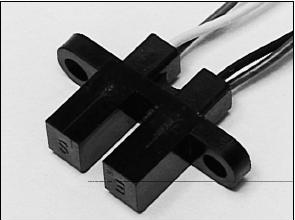This is my first electronics project, and I've been working on a semi-automatic small gauge wire stripper, made from scrap as much as possible,
one motor powered by 9v battery, one by 3v watch battery. I want to feed the small gauge wire into a slot, hit a switch, and have a cleanly slit wire out the other end within seconds. I'm using DC motors, gears and hardware from VCRs, printers, and CDROMS, and I'm starting to pull relay switches and other components from TV boards. Tomorrow I'm going to make a breadboard out of ribbon cable connectors. I'm also trying to work out a gear train that will take the ~20k rpm of the 12v dc motor down to about 60 rpm.
I need to wire up a relay circuit to start the motor (A) with a signal from a physical push button switch, moving a razor blade cutting down into the insulation of a wire. Then stop the motor when it receives a signal through the blade when it contacts copper wire, while sending a signal to a different motor (B) that feeds the wire past the blade. (The wire is now being stripped, have a drink). A physical switch will send signal to reverse direction of motor A, returning it to its start position (once it gets there, it needs a signal to stop), and same switch will tell motor B to stop.
Getting current through the wire can be done by manually slicing a bit of the insulation and clipping an alligator clip on the end of the wire connected to another battery. Once motor A detects the current through the blade, motor B will start the feed rollers with enough force to knock the clip off as it hits the housing.
With extra precision, I think it would be possible to have the blade horizontal/paralell, so you could use the full length of the blade, shifting the cutting surface once it gets dull, or at a timed interval.
I welcome any advice..I barely know what I'm doing






 Register To Reply
Register To Reply

















Bookmarks